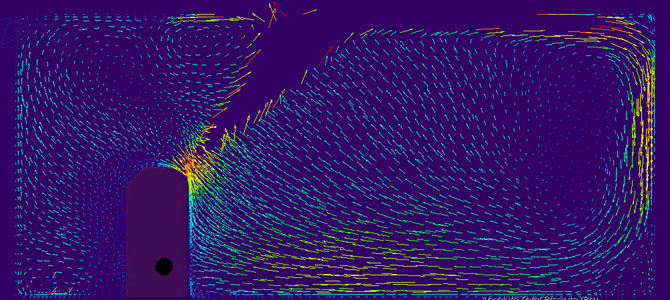Real World Interactions
Simulation using computational fluid dynamics (CFD) of indoor air quality (IAQ) in healthcare setings

The focus is on innovative approaches to natural ventilation of clinical spaces (wards) because existing systems are fraught with problems. Mechanical ventilation is unsustainable and the reliance on windows for fresh air makes them problematic in two ways. Firstly, they are inefficient for getting fresh air into the space due to design restrictions of 100 mm as maximum allowable openable area (HTM), and the travel distance to innermost parts of multi-bed wards. Second, in colder weather, windows lose heating energy but closing them leads to poor IAQ (i.e. thermal discomfort and increased risk of cross infection from pathogenic bio-aerosols and particulates). Our research therefore has sought to demonstrate the feasibility of decoupling airflow delivery from windows through innovative ventilation systems. For the first challenge, we have developed the concept of natural personalised ventilation (NPV) system which shows potential for delivering fresh air to remote parts of a ward, especially in non-winter conditions. For the second energy efficient challenge, our work has produced a biomimetic and passive heat recovery system called natural ventilation with heat recovery (NVHR). This detachable system was inspired by the Loop of Henle (part of the human kidney) and it is able to deliver fresh air and reduce heating energy by at least 50% without need for electric power or mechanical parts. The NVHR is quite suited to hospital wards which have substantial internal heat loads due to constant occupancy and use of equipment.
Staff: Z A Adamu
